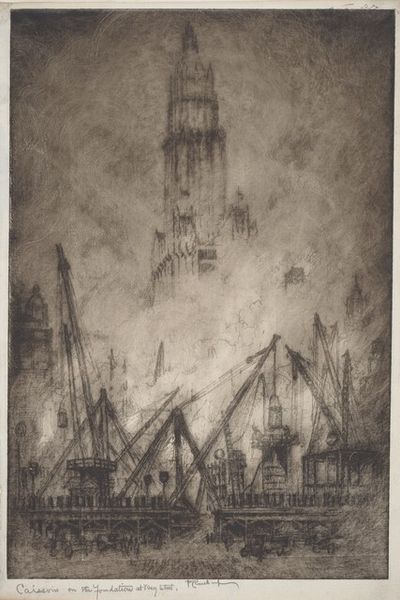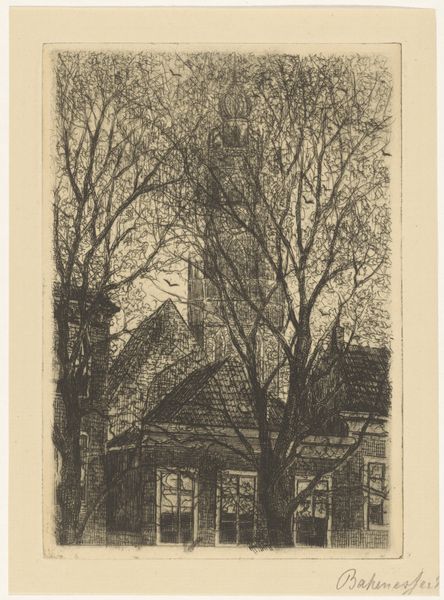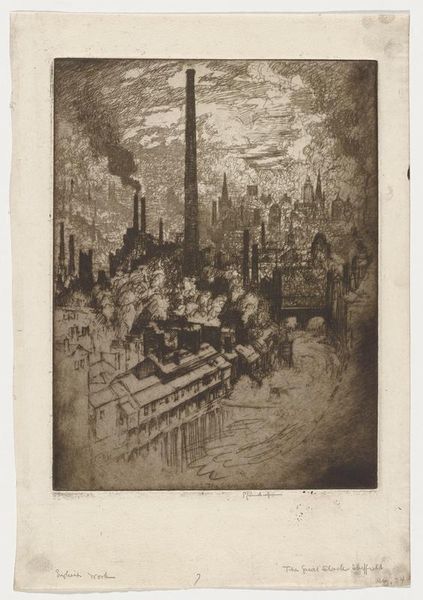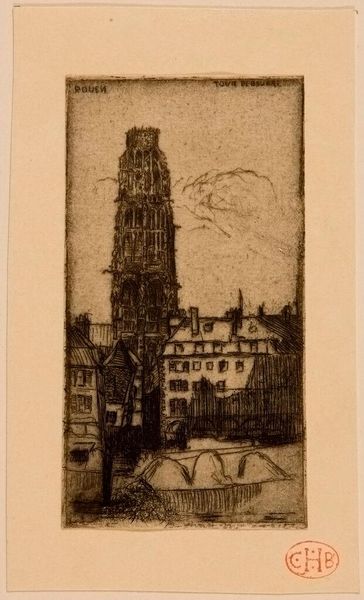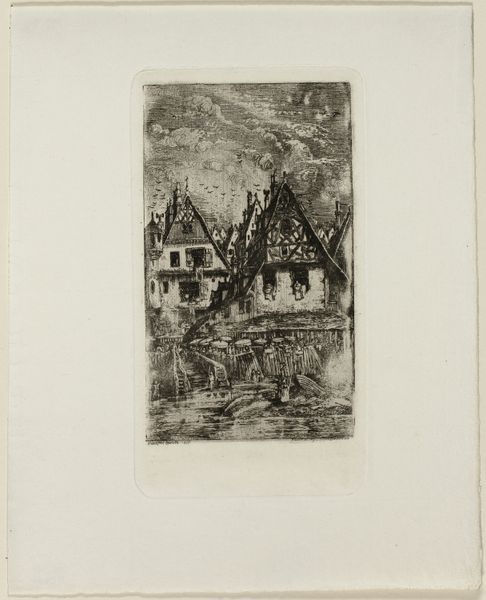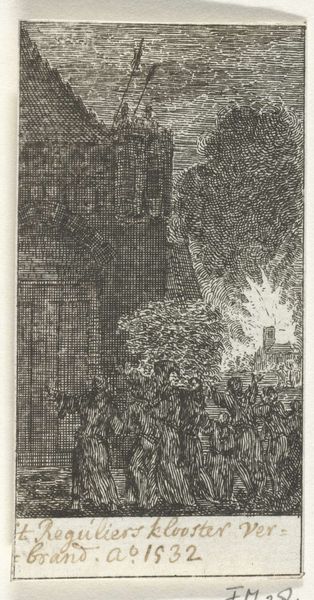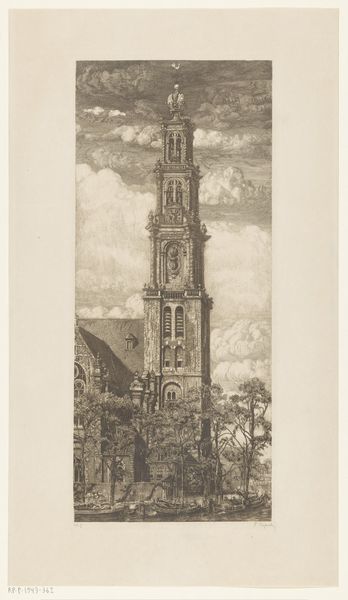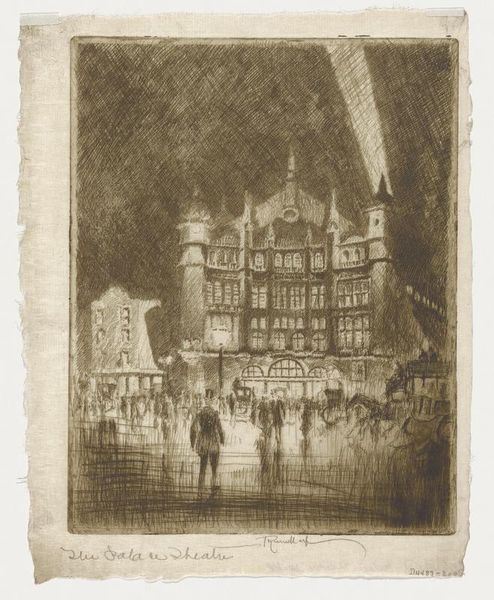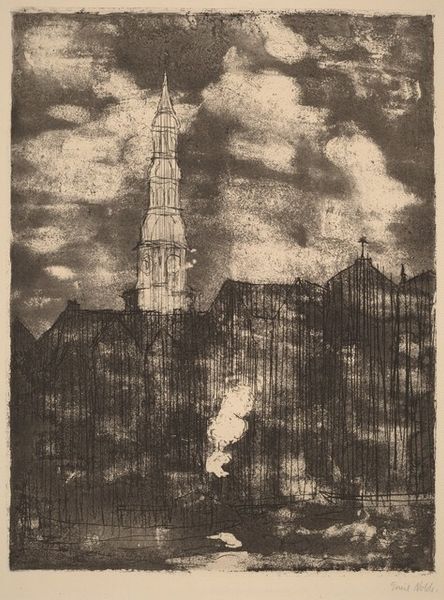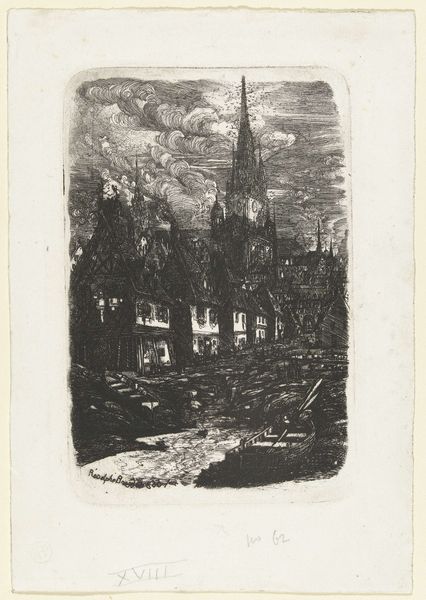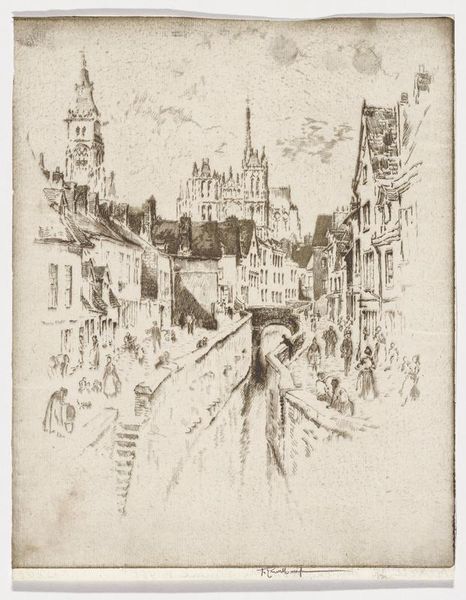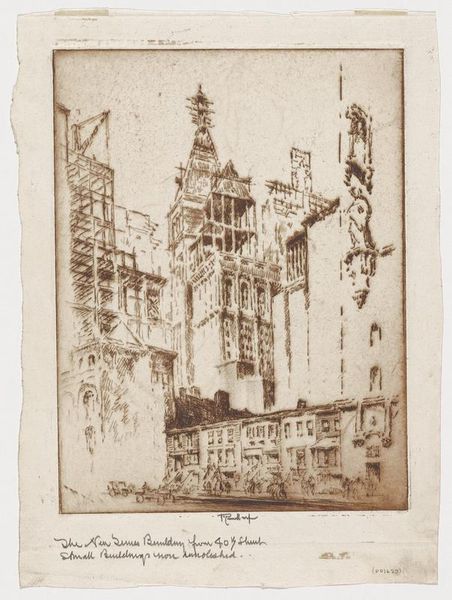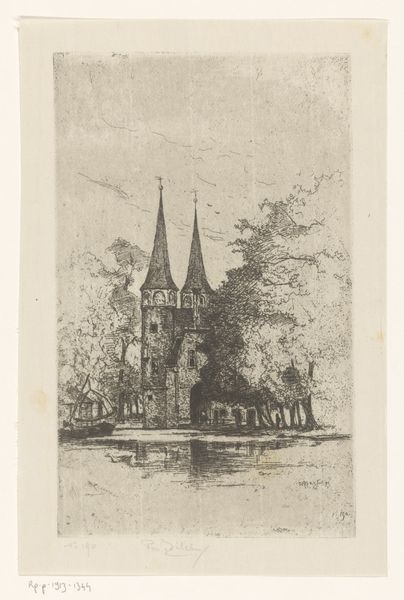
graphic-art, print, etching
#
graphic-art
# print
#
etching
#
landscape
#
cityscape
#
modernism
Dimensions: 13 13/16 x 9 3/16 in. (35.08 x 23.34 cm) (plate)16 x 10 3/8 in. (40.64 x 26.35 cm) (sheet)
Copyright: No Copyright - United States
Curator: This is Joseph Pennell's "Caissons on Vesey Street," an etching created in 1924, now residing here at the Minneapolis Institute of Art. Editor: It’s quite striking. The overwhelming network of lines almost seems to vibrate off the page. It gives a strong impression of industrial activity and frenetic energy, like a swarm of steel. Curator: Pennell often depicted cityscapes, particularly New York, and frequently focused on the dramatic architectural achievements of the era. His work offers an intriguing look into how American cities were perceived and projected in the early 20th century. Editor: Absolutely. The dominance of vertical lines pulls the eye upwards. We’re directed from the cluttered activity on the street level towards what I can only assume is a cathedral fading into the distance, rendered as an ethereal silhouette. This stark contrast between the industrial base and spiritual aspiration makes for a powerful composition. Curator: It’s important to remember Pennell positioned himself as an advocate for industrial progress, showcasing America’s technological prowess to the world. There was an almost propagandistic element in his depictions of industry. Editor: Yes, but I find the formal treatment is complex. Even within his self-appointed propagandist agenda, the dissolving lines and somewhat vague forms can equally evoke a sense of uncertainty. The architectural solidity is, paradoxically, rendered unstable. It invites questioning, despite the bravado. Curator: Indeed, these works often circulated in prints intended for mass consumption, reinforcing notions of American ingenuity but also arguably celebrating an emerging urban lifestyle, warts and all. His aesthetic choices mirror this transitional period. Editor: Overall, I would say the combination of stark lines with almost dissolving forms renders a compelling balance between ambition and uncertainty, a reflection perhaps of modernity itself. Curator: It gives one a vivid impression of the anxieties and aspirations embedded in America’s rapid industrial growth.
Comments
No comments
Be the first to comment and join the conversation on the ultimate creative platform.
